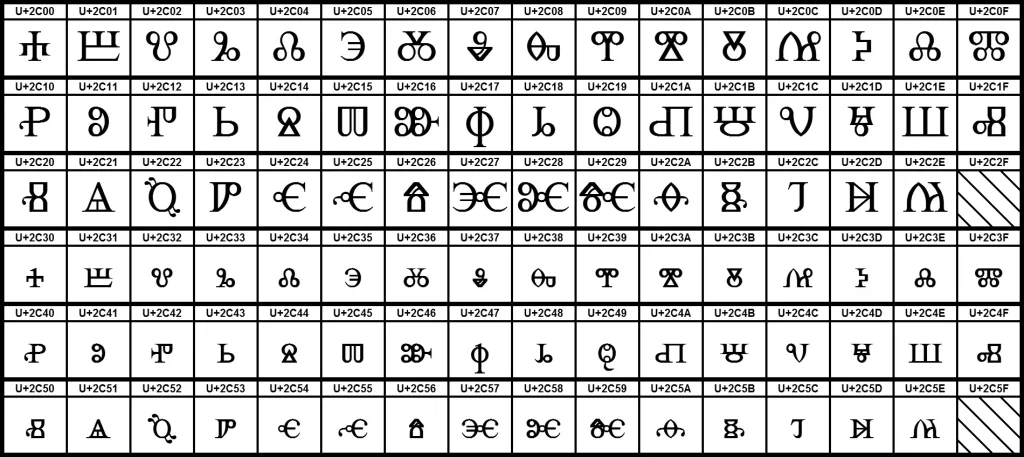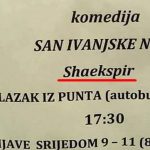We’ve explored many of the dialects, subdialects and indeed languages in their own right as some linguists consider them to be which are spoken across modern Croatia. From the Dubrovnik subdialect (Ragusan) in the extreme south of Dalmatia to Northwestern Kajkavian in areas like Zagorje, the ways in which people speak in this country deviate from what we know as standard Croatian language enormously. That goes without even mentioning much about old Dalmatian, Zaratin, once widely spoken in and around Zadar, Istriot, or Istro-Venetian. What about Glagolitic?
A (very) brief history
To start off, it’s worth noting that the origins of the Glagolitic alphabet are disputed to an extent. This can be said for most ancient languages and linguists are known to squabble over such things, but it is generally accepted that the script was created back during the ninth century by a monk from Thessalonica (today’s Thessaloniki in Greece) called Saint Cyril, as well as to Saint Methodius, his brother. The very first observed mention of the word ”Croatia” in the Glagolitic script dates back to around 1100 AD.
Another interesting fact about Glagolitic is that the precise number of letters in its original form is entirely unknown, but what we do know is that it is likely that Saint Cyril and his brother Methodius created the script in order to facilitate the introduction of the Christian faith, and we can assume with some level of certainty that the initial number of letters would have close to a Greek model. That said, there are elements of a variety of different languages within Glagolitic.
Over the many years, Glagolitic evolved with the population of its users and the tumultuous times they faced. It is certain that during the twelfth century, as Glagolitic in its original form (even with its non-Greek sounds) began to lose its grip, more and more Cyrillic influence could be found. As the centuries rolled on, more and more original Glagolitic letters were dropped, seeing the original number of letters drop to less than thirty in the Croatian recensions of what was called the Church Slavic language.
The use of the Glagolitic script in Croatia
The first Croatian Glagolitic book to be printed was Missale Romanum Glagolitice from 1483, and if you somehow managed to obtain a fully functioning time machine and took a quick trip back to the twelfth century and landed anywhere in Kvarner, Istria, Dalmatia, or even in Medjimurje, you’d have come across the Glagolitic script more or less everywhere. It’s true that Glagolitic was mostly found in the coastal parts of the country, with notable areas being islands such as Krk (the Kvarner area) and the Dalmatian islands which sit just off the Zadar mainland, but traces of it stretched to Medjimurje (far inland), Lika, and even in parts of modern Slovenia.
For a very long time, it was accepted that the Glagolitic script was used solely in the aforementioned areas, but when 1992 rolled around and Croatia was engulfed in some extremely difficult times in its fight for independence and against Serbian aggression, some fascinating discoveries were made in old churches situated along the Orljava river in Eastern Croatia (Slavonia). This rather remarkable discovery blew previous theories about the locations in which this ancient script was used out of the water, and proved that it was also indeed used in Slavonia, something that was simply not even considered before.
While the twelfth century was in some ways a form of peak for the old Glagolitic script in Croatia, it did survive beyond that as the nation’s main script, and for some time, but after a while, the development (or indeed decline) of this script was very poorly documented for a variety of reasons. Just before the marauding Ottomans began sniffing around the area, and before the Croatian-Ottoman wars truly began, the use of Glagolitic was at its very peak, and in today’s measure, the amount of people using it back then would correspond to the amount of people in Croatia who use the Chakavian and Kajkavian dialects (two of the main dialects which make up modern standard Croatian) today.
The Ottoman wars and the decline of Croatian Glagolitic
The Ottomans and their invasions in the surrounding areas sounded the death knell for Croatian Glagolitic, and its stability in the region began to slip severely, with more damage being done to the use of this old script in areas more devastated and culturally altered by the Turkish forces. While the Ottomans certainly laid the heaviest of the groundwork to put the nails in Glagolitic’s coffin, the real blow which set the wheels in motion for Glagolitic to meet its fate came much, much later, more precisely in the seventeen century, and by a bishop from Zagreb, no less.
The Zrinski-Frankopan conspiracy, the west and the Italians
You’ve likely never heard of this conspiracy, as it’s known in Croatia by this title, but to others it is simply called the Magnate conspiracy. In short, this conspiracy was an organised attempt to remove foreign influences (read Habsburg) from both Croatia and neighbouring Hungary during the seventeeth century. This left the Glagolitic script entirely without secular protection, and its use was severely limited, seeing it used only in the coastal region of modern Croatia. One century later, in the very late part of it, western influence saw to it that Glagolitic was to be no more. The culture and the script crumbled under secular pressures from the west, and it relied solely on printed material. By the time the twentieth century had rolled around and Fascist Italy did its bit in many part of modern Croatia, the areas in which the Glagolitic script had managed to cling on to existence suffered tremendously, and these areas were scaled back even more.
Glagolitic in modern day Croatia
Many ancient buildings, such as churches, still bear the Glagolitic script to this day, and of course, items bearing it can also be purchased across the country. The brand new Croatian euro coins with national motifs on them also proudly bear this ancient script, and it can be found on the 2 and 5 cent coins minted here. The 1992 discoveries in Eastern Croatian churches also shed light on the script, and those churches are in Lovcic and Brodski Drenovac. Some of the oldest stone monuments with the Glagolitic script engraved on them have been found in Istria and on the island of Krk, and in February each year, Croatian Glagolitic Script Day is marked in an attempt to preserve the rich and rather mysterious history of this script for generations to come.
For more on the modern Croatian language, dialects, subdialects, extinct languages, and learning Croatian, make sure to check out our dedicated lifestyle section.











